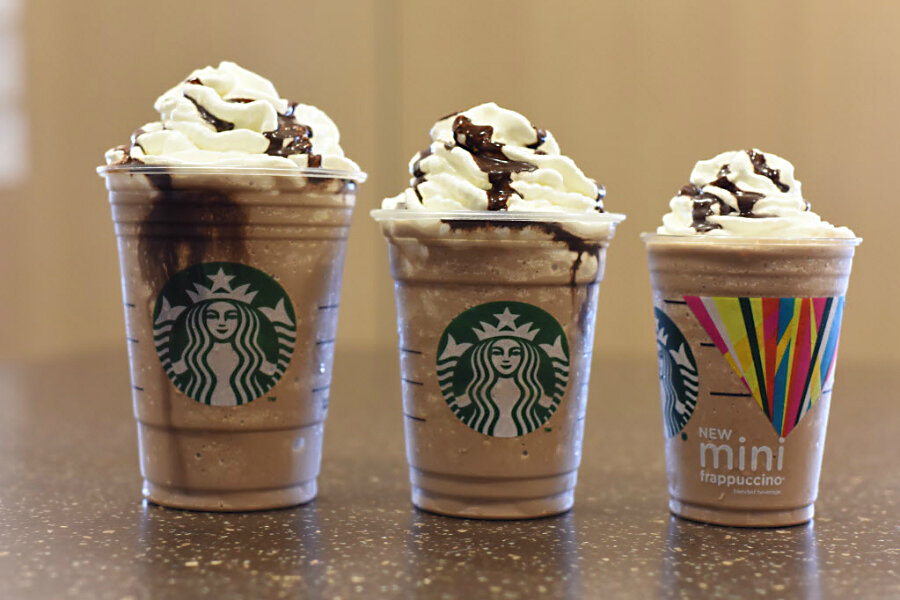Starbucks to offer Mini Frappuccino: Is small the new grande?
Loading...
After hearing from its customers, Starbucks agrees that bigger isn't always better.
On Monday, the coffee giant introduced a "Mini" Frappuccino, which it will offer until July 6. At 10 ounces, the new beverage size is two ounces smaller than Starbucks' "tall" version.
A press release from Starbucks says that the smaller sugary concoction arose from "My Starbucks Idea," a website that allows people to submit and vote on new ideas for the coffee chain. More than 6,000 customers weighed in with suggestions for the Frappuccino, with many requesting a smaller one, the company says.
Introducing a smaller version of the summertime favorite runs contrary to the well-documented trend in the United States of food retailers offering ever-larger portions, with direct implications for public health.
Starbucks, for its part, originally had only two coffee sizes: the 8 oz. "short" and the 10 oz. "tall." Over time, the chain removed "short" from its menu, (although you can still secretly order one), adding "grande" (16 oz.), "venti" (20 oz.) and eventually, for iced beverages, "trenta" (31 oz.).
As portions have expanded, so have American waistlines. According to the National Institute of Health, food portions in restaurants have double or tripled in the previous two decades, which public health experts have pegged as a key contributor to a potentially devastating increase in obesity among children and adults.
The Centers for Disease Control has found that more than a third of the US adult population is obese, a figure that has more than doubled since 1980.
But the trend toward supersizing finally may be reversing. A 2014 Tufts study found little change in overall portion sizes in fast food restaurants after 1996. And according to the National Restaurant Institute's "What's Hot in 2014" survey, respondents ranked smaller portions as the 20th most important trend in choosing a place to dine out.
“Weaker casual-dining operators made major entree items smaller,” John Gordon of the Pacific Management Consulting Group told Full-Service Restaurant Magazine in 2012. “The customers notice it over a period of time. The better practice in restaurants would be to be able to have a half size or a whole size.”
Still, the benefits of smaller portions can be easily canceled out by customers simply purchasing more food. In 2008, when the sandwich chain Quiznos introduced $2 "sammies" that had 200 to 300 calories in November, customers responded by purchasing more than one, in addition to chips and a drink, according to the Associated Press.
"We sensed a bit of a backlash on the full plate-ization of America, [and] we think it's a great response to both the tug of the tight economy and the tight waistline," Quiznos chief marketing officer Steve Provost told AP at the time.
"People in focus groups tell us they want control, they want to eat lighter. The fact that they are buying more than one and are buying a chip or a drink with us shows us they are choosing to fill up their plate again."






